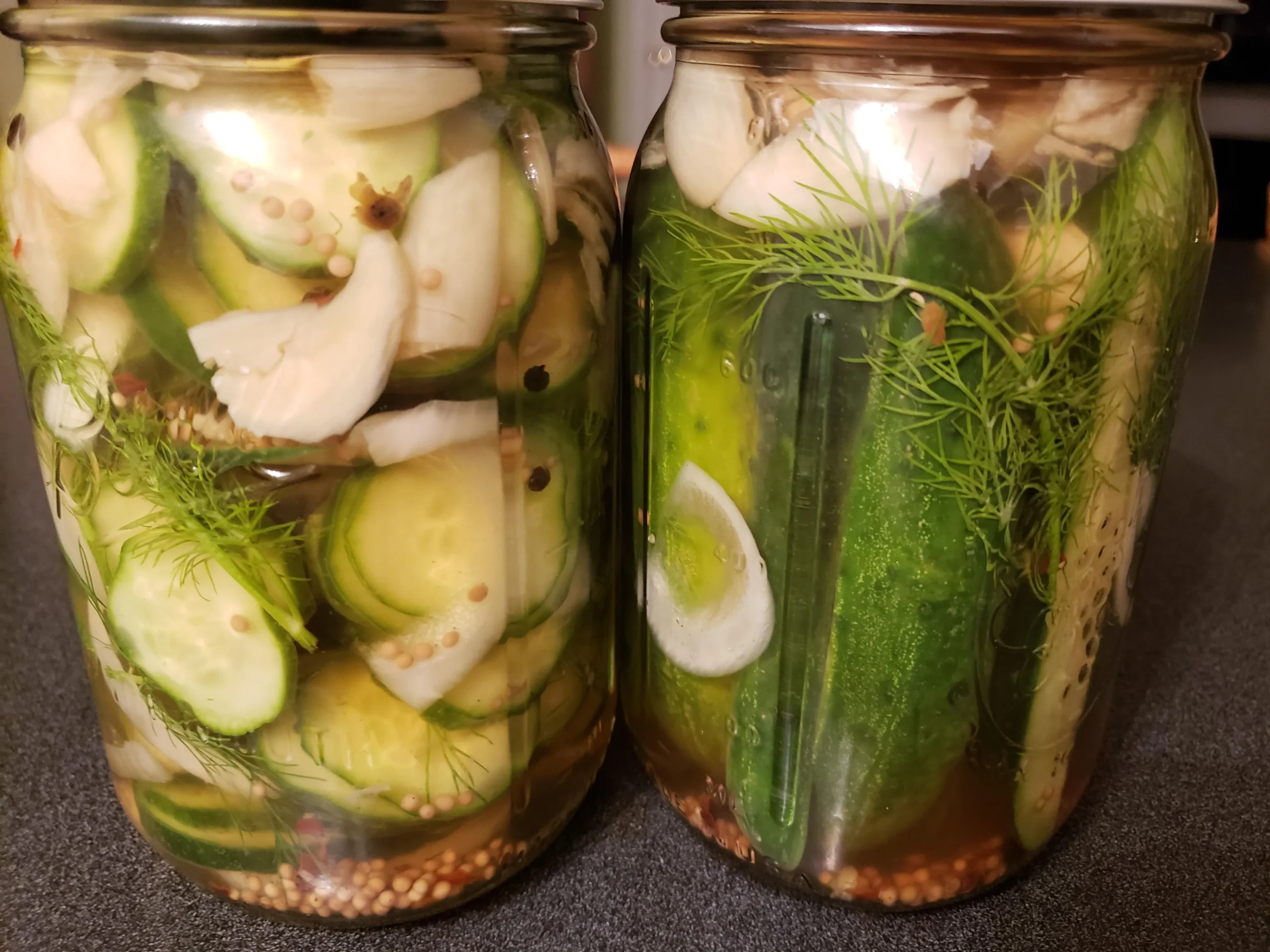Imagine biting into a crisp, perfectly tangy pickle that you crafted with your own hands - a flavor explosion that store-bought pickles can never match! Fermented dill pickles are not just a condiment; they're a culinary adventure that transforms simple cucumbers into a probiotic-rich, mouth-watering delicacy. Whether you're a pickle enthusiast or a curious home cook, this recipe will take your taste buds on a journey of traditional fermentation magic that's both incredibly simple and surprisingly delicious.
Prep Time: 20 mins
Cook Time: -
Total Time: 20 mins
Cuisine: American
Serves: 1 quart
Ingredients
- 1 quart cucumbers, whole or sliced
- 4 cups water
- 2 tablespoons sea salt
- 4 cloves garlic, crushed
- 1 tablespoon dill seeds
- 1 teaspoon black peppercorns
Instructions
- Begin by selecting fresh cucumbers. If using whole cucumbers, choose smaller varieties, such as Kirby cucumbers, for optimal crunch. Wash them thoroughly under cold running water to remove any dirt or debris.
- Prepare your fermentation jar. A clean, quart-sized glass jar with a tight-fitting lid is ideal. Ensure the jar is sterilized by washing it in hot, soapy water or running it through a dishwasher cycle.
- In a separate container, combine 4 cups of water with 2 tablespoons of sea salt. Stir the mixture until the salt is completely dissolved. This brine solution will help preserve the cucumbers and create the ideal environment for fermentation.
- If you prefer sliced pickles, cut the cucumbers into uniform slices, about 1/4 inch thick. If using whole cucumbers, leave them intact.
- Place the cucumbers into the prepared jar, packing them in tightly to minimize air pockets. This will help ensure even fermentation.
- Add the crushed garlic cloves, dill seeds, and black peppercorns to the jar, distributing them evenly among the cucumbers.
- Pour the prepared brine over the cucumbers in the jar, ensuring they are fully submerged. If necessary, you can add a small weight or a clean stone on top of the cucumbers to keep them submerged in the brine.
- Seal the jar tightly with the lid, but be sure to leave it slightly loose to allow gases to escape during fermentation. This will prevent pressure build-up inside the jar.
- Place the jar in a cool, dark place, such as a pantry or cupboard, for fermentation. Allow the pickles to ferment for about 5 to 7 days, checking daily for bubbles and the development of a tangy aroma.
- After the desired fermentation period, taste the pickles. If they have reached your preferred level of tanginess, you can transfer the jar to the refrigerator to slow down the fermentation process. If you prefer a stronger flavor, allow them to ferment for a few more days.
- Once refrigerated, the fermented dill pickles can be enjoyed right away or stored for up to several months. Serve them as a crunchy snack, a side dish, or as a condiment for sandwiches and burgers.
Tips
- Choose the Right Cucumbers: Fresh, firm Kirby or pickling cucumbers work best. Avoid waxed varieties, as they won't ferment properly.
- Cleanliness is Key: Always sterilize your jar thoroughly to prevent unwanted bacteria from interfering with fermentation.
- Salt Matters: Use high-quality sea salt or kosher salt. Avoid iodized salt, which can inhibit fermentation.
- Temperature Control: Keep your fermenting pickles at a consistent room temperature (around 65-75°F) away from direct sunlight.
- Trust Your Senses: Look for small bubbles and a tangy aroma during fermentation. These are signs of healthy fermentation.
- Patience Pays Off: Don't rush the process. Fermentation takes time, and the longer they sit, the more complex the flavor becomes.
- Storage Tip: Once you're happy with the flavor, refrigeration will slow down fermentation and help preserve your pickles for months.
Nutrition Facts
Calories: 27kcal
Carbohydrates: g
Protein: g
Fat: g
Saturated Fat: 0g
Cholesterol: 0mg


